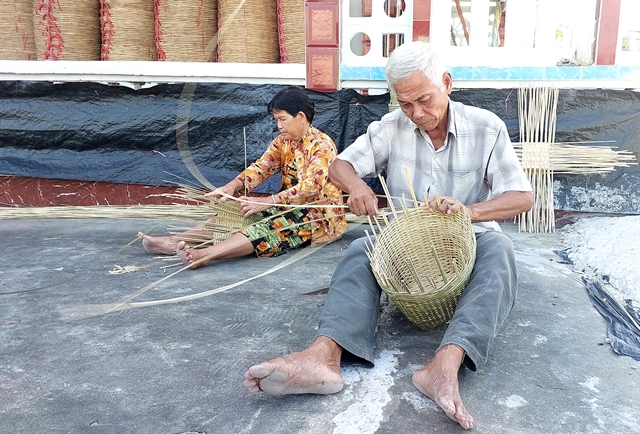 Society
Society

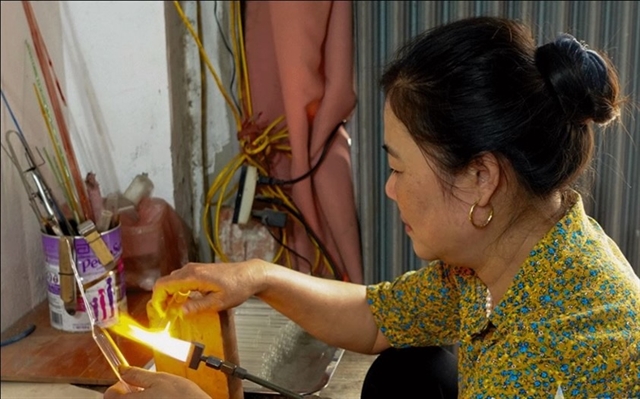 |
| Artisan Tạ Thị Ngà making glass tubes. — Photo qdnd.vn |
HÀ NỘI — The skilled glassblowing artisans of Hà Nội’s Thường Tín District are continuing their diligent efforts to preserve their traditional trade amid a time of change and uncertainty.
These craftsmen remain committed to creating intricate glass products, contributing to the preservation of a unique piece of cultural heritage.
For these skilled workers, glassblowing is not just a livelihood, but also a source of pride for a village once renowned under the brand name 'Thống Nhất Glass'.
Since the 1960s, the former Thống Nhất Commune – now called Vạn Nhất Commune – has been recognised for its traditional glassblowing craft, and is home to many talented artisans.
Artisan Hồ Văn Gừng, 75, from Giáp Long Hamlet, still works every day with the red-hot furnace, shaping beautiful glass lamps.
Gừng recalled that in the 1980s and 1990s, he painstakingly researched methods to create products that met market demands.
“In 1982, I began making my first glass lamps,” Gừng told qdnd.vn.
“Over time, I expanded into producing containers for philatop medicine, thermos lids, bird feeding bowls and various laboratory glass tubes,” he said.
“Making glass lamps requires more advanced techniques than other products, as they must be crafted by hand without moulds. Since they were affordable, many people used them,” the artisan noted.
Glassblowing is a process requiring great technical skill.
Using only his keen eyesight and experienced hands, Gừng carefully cuts glass segments with a blowtorch, gauging the right temperature to shape them.
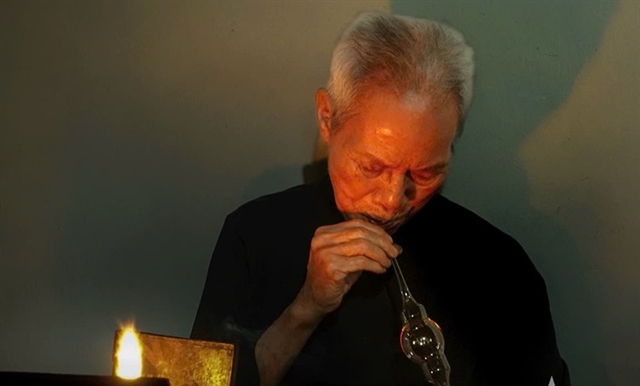 |
| Artisan Hồ Văn Gừng preserves his craft by blowing glass lamps. — Photo qdnd.vn |
He explained that the most challenging part is achieving the correct product shape without moulds, relying instead on his imagination to sculpt identical pieces.
As he skilfully shapes a glass oil lamp, Gừng proudly recalled that during the 1980s and 1990s, almost every household in the commune had a glassblowing furnace, and the craft spread widely.
Thanks to this trade, the local economy improved, and the 'Thống Nhất Glass' brand became well known for its diverse and high-quality products, he said.
Tạ Thị Ngà, 50, and her husband, Lương Văn Trãi, 55, have kept their glassblowing workshop open for more than 30 years.
“I started learning the trade at 15 from my father. Now, I am teaching my son and daughter-in-law to continue our family tradition,” Ngà said.
Working alongside his wife, Trãi reminisced about the early days of his career, which were fraught with difficulties.
“Back then, there were no gas stoves like today. To heat the glass properly, we had to pump the bellows tirelessly. Getting cuts from glass was common and became a normal part of the job,” Trãi recalled.
Preserving a traditional craft
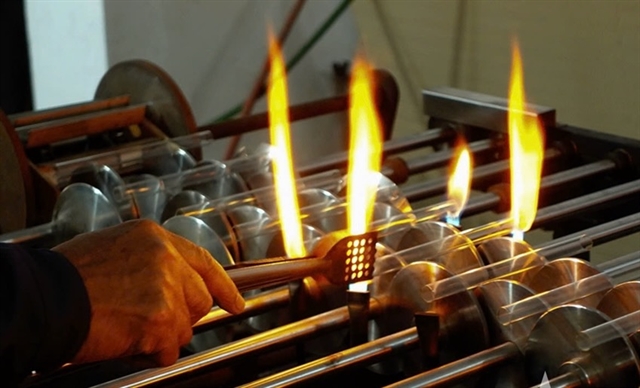 |
| Most of the glass production process in the village is done by hand. — Photo qdnd.vn |
Vạn Nhất Commune currently has around ten households continuing the traditional glassblowing trade.
Ngà is among those striving to preserve and develop the craft.
Wiping the sweat from her forehead, she explained: “Our products mainly serve hospitals and schools, so we must ensure absolute quality, especially for test tubes and urine sample containers.”
According to the workshop owner, before modern machinery and tools were available, glassblowing required immense patience and dexterity. Craftsmen worked in harsh conditions, heating the glass before skilfully blowing it into delicate shapes. Their sharp observation and nimble hands allowed them to cut uniform glass tubes with consistent designs and sizes.
Currently, Ngà’s family workshop primarily produces medical test tubes based on pre-orders from schools and hospitals.
With the support of modern equipment, the work has become easier, and daily output has increased to 20,000–30,000 products, helping to maintain and expand the traditional craft.
However, advances in industrial production and changing market demands have led to the gradual decline of traditional glassblowing in Vạn Nhất.
Gừng said that many families have abandoned the trade in favour of jobs with higher incomes.
While the variety of products is no longer as extensive as before, Gừng and his wife persist in producing glass lamps, with majority of which are oil lamps for ancestral worship, earning around VNĐ5 million (US$200) per month.
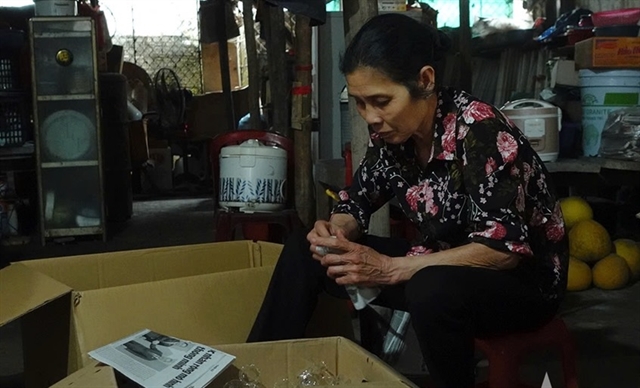 |
| Checking and packaging products. — Photo qdvn.vn |
The glowing embers and rhythmic bellows have become an inseparable part of Trãi’s family life.
“Nowadays, sales are not what they used to be, and many villagers have left the trade, but our family remains committed,” he said.
For Gừng, Ngà, Trãi and many other generations of artisans, glassblowing is not just a profession but a deep-rooted source of pride.
The flames in their furnaces do more than craft exquisite handmade glassware – they also symbolise the enduring spirit of these skilled workers, who continue their craft despite countless challenges and changes. — VNS